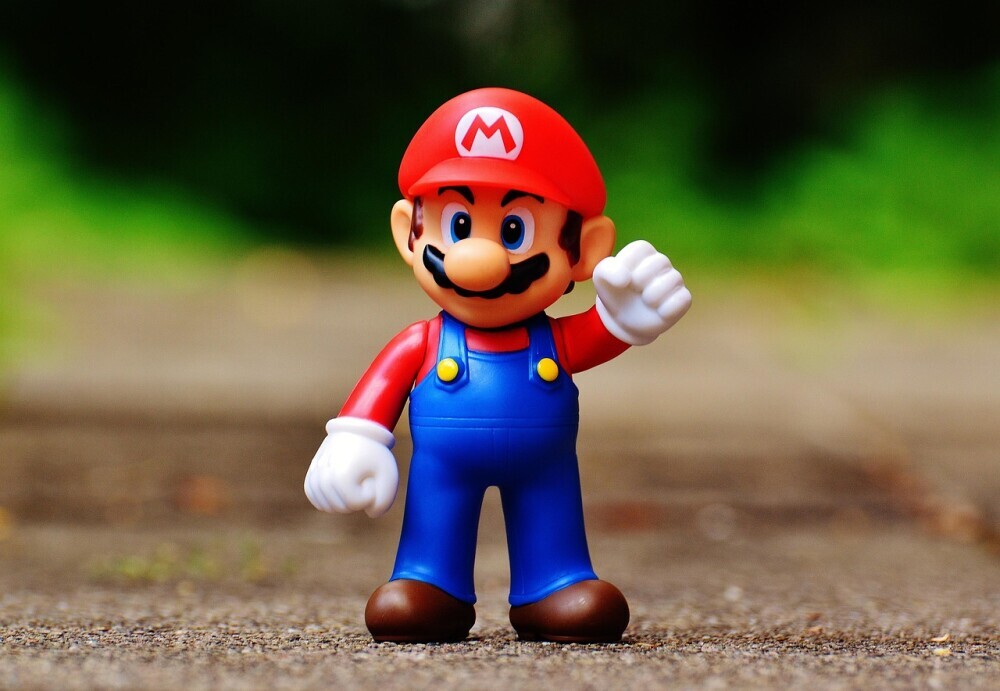Gaming icons are more than just entertaining characters. They have left a lasting legacy on the entire industry, influencing design, storytelling, and technology. I have always found it fascinating how a well-designed character resonates not only with gamers but also with pop culture as a whole. In this article, I celebrate those gaming legends who changed the industry in ways that continue to influence modern gaming. Whether you grew up with pixelated heroes or you appreciate the modern intricacies of character design, there’s a story behind every gaming icon.

Legendary Characters: The Pioneers of Gaming
The early days of video games introduced characters that became household names overnight. In a time when gaming was still in its infancy, characters emerged from simple graphics and catchy tunes to become powerful symbols. Their designs were basic, yet every pixel carried a punch that connected with players on a personal level. These pioneers laid the groundwork for narrative depth and immersive gameplay.
From the days of arcade cabinets to the era of home consoles, these characters broke new ground. They challenged conventions and set trends that have been built upon over the decades. Every jump, every power-up, and every iconic sound contributed to an entire culture built around gaming. Today, the legacy of these games is felt in every new title released. It serves as a reminder of how very important these characters have been to the growth of interactive entertainment.
Breaking Ground: How Gaming Icons Changed the Industry
Gaming icons changed the landscape of the industry by continually redefining what was possible in game design and storytelling. These characters were not just part of the game; they were the very reason people got excited about interactive entertainment. With memorable appearances and distinctive personalities, they paved the way for immersive worlds that felt both expansive and personal.
Several factors contributed to their impactful legacy. For many fans, these characters became a source of inspiration, encouraging further innovation in how stories are told within games. Over time, groundbreaking graphics and creative storytelling have combined to create characters that are built with depth and charm. Their influence isn’t limited to gameplay. They have shaped how narratives are crafted and have sparked countless discussions about design and player engagement.
Understanding the Core Traits of Iconic Gaming Characters
Every unforgettable gaming character shares certain traits that make them stand out. In many ways, their impact can be traced back to how they were conceived, designed, and ultimately integrated into the gaming experience. It’s helpful to break down the building blocks that have contributed to their iconic status.
Here are some essential elements behind the success of gaming icons:
- Unique Visual Style: Their distinct look and feel set them apart, ensuring they were easily recognizable even with limited graphics.
- Engaging Storylines: Rich backstories and memorable dialogues contributed to a deep connection with players.
- Innovative Gameplay Mechanics: By introducing fresh and surprising elements into gameplay, these characters evolved with technology and player expectations.
- Emotional Connection: Whether through humor, adventure, or courage, these characters struck a chord with audiences, creating lasting bonds.
These traits are at the heart of what made each character more than just a figment on a screen. They helped build entire universes around them, drawing players back for more and inspiring many to create their own gaming dreams.
Getting Started with Gaming Nostalgia: An Exploration
Jumping into the world of gaming icons can feel like opening a treasure chest of memories and innovations. For longtime gamers, every character evokes personal stories. For newcomers, these icons offer a window into how much the industry has changed over the years.
One way to begin is by exploring the early titles that launched these characters into stardom. Playing these classic games not only provides entertainment but also offers insight into the design philosophy of the time. Here are some steps I recommend if you want to ride through the evolution of gaming icons:
- Explore Classic Titles: Start with the games that introduced characters who became cultural phenomena. You might choose a classic arcade game or a well-loved console title.
- Jump into Retro Reviews: Read reviews and retrospectives to understand what made these characters break the mold at their time of release.
- Analyze Game Design: Notice how simple graphics and soundtracks were paired with innovative gameplay, and consider how these elements created a timeless experience.
- Revisit Iconic Moments: Watch gameplay footage to see how a character’s personality was built scene by scene.
- Connect with Fellow Gamers: Share your experiences with communities online to see how others relate to these gaming legends.
These steps can help anyone appreciate the subtle layers that have contributed to making a gaming icon. The adventure through nostalgia is not just about reliving the past. It is an educational path that shows how far the industry has come and how the creative spark of early games continues to influence new ideas.

Challenges in Crafting a Gaming Icon
Developing a character that resonates on a global scale is a daunting task. Many game developers started with heroic concepts and pushed their visions to the limit. Along the way, they encountered challenges that required balancing artistic vision with player expectations.
Here are some common challenges that creators face when trying to build an iconic gaming character:
- Story Depth: A compelling backstory is necessary to give the character emotional weight, but too much complexity can overwhelm the audience.
- Design Simplicity vs. Detail: Striking the right balance between simplicity for recognition and detailed design for appeal is a tough challenge.
- Technological Limitations: Early games had hardware constraints that dictated how characters could be depicted. Overcoming these constraints often led to creative solutions that defined classic aesthetics.
- Cultural Impact: Ensuring that a character appeals across diverse audiences can be difficult. Developers need to design characters that are inclusive and inspiring without losing their individuality.
Story Depth
Building a rich narrative around a character is one of the most enjoyable yet challenging aspects of game development. During the early years, a simple storyline was often enough. However, as audiences grew more sophisticated, developers had to invest more in crafting layered narratives. This evolution led to characters who offered players more than just a mission or a quest – they provided emotional journeys and experiences that resonated on multiple levels.
Design Simplicity vs. Detail
The balance between a simple design for easy recognition and intricate details that cater to enthusiasts can be tricky. Classic icons were designed in an era of limited resolution and processing power. The creative minds behind those characters learned to convey personality with very few pixels. Today, while technology permits much more detail, many developers still pay homage to that original simplicity because it fosters immediate recognition and nostalgia.
Technological Influence
Technology has always been a driving force in game design. In the early days, limitations led to creativity; simple animations and catchy tunes became hallmarks of the era. As equipment improved, so did the capabilities of designers. Modern gaming characters benefit from advanced graphics, complex animations, and robust voice acting. Each technological jump has contributed to making characters feel more lifelike and engaging, setting high expectations for every new release.
Cultural Impact
Gaming characters often become more than just a part of a game – they turn into cultural symbols. This cultural impact comes from a combination of storytelling, visual design, and interactivity. However, creating a character that leaves a global mark requires navigating diverse cultural perspectives. Developers work hard to design characters that inspire fans across countries and generations. This process involves careful thought to ensure that the spirit of the game is accessible and appreciated by everyone, regardless of background.
Each of these challenges requires thoughtful planning and bold creativity. Despite the obstacles, the end result often becomes an icon that defines an era and continues to stand strong as a symbol of creativity and innovation in gaming.
Advanced Insights: Refining the Iconic Image
As game design evolved, so did the techniques in developing characters that capture the hearts of millions. Beyond the basics, advanced strategies come into play that step up the character’s appeal and legacy.
Mastering Visual Storytelling: Developers experiment with lighting, color palettes, and symbolic imagery to subtly convey a character’s backstory and personality. These visual cues often evolve over generations of a series, keeping the design fresh while still honoring tradition. This method creates a cohesive visual identity that resonates with both new players and longtime fans.
Integrating Gameplay with Narrative: A character often becomes iconic by how they interact with the game world. The blend of innovative gameplay mechanics and rich narrative helps the character stand out. This combination makes the gaming experience more immersive and memorable for players. Every player action is interwoven with the storyline, ensuring that the character feels like an integral part of a living world.
Pushing Technological Boundaries: Some of the most iconic characters emerged when technology was on the brink of transformation. Developers who pushed technological limits not only improved the visual and interactive aspects of characters but also redefined what gamers expected from a title. This drive to innovate challenges the industry to continually think outside the box and set new benchmarks for storytelling and design.
These advanced insights show that the process of designing a gaming icon is an ongoing one. The creative and technical ingenuity that once birthed these legends continues to inspire modern developers to blend tradition with innovation in exciting new ways.
Fundamental Elements: What Makes a Character Truly Iconic?
Even with today’s advanced design techniques, certain fundamental elements remain essential for a character to achieve legendary status. It is worth noting that timeless characters usually incorporate specific core elements that instantly resonate with players.
Here are the main aspects that any aspiring game designer should keep in mind:
- Memorable Aesthetics: A unique look that stays true to the character’s personality forms the foundation of iconic design.
- Engaging Personalities: Characters with distinct motivations, strengths, and flaws draw players in by offering a relatable narrative experience.
- Innovative Mechanics: Aligning a character’s design with novel gameplay elements refreshes the experience each time a player interacts with the game.
- Legacy and Adaptability: The ability to evolve over time without losing core traits helps characters remain relevant as the industry shifts and grows.
These elements work together to create a character that not only stands out on-screen but also leaves a lasting impression on anyone who experiences the game. Reflecting on these fundamentals deepens one’s appreciation for the craftsmanship behind each development cycle.
Frequently Asked Questions
For those who have questions about the influence of gaming icons, here are some common inquiries along with straightforward answers:
Question: What makes a gaming character iconic?
Answer: A character becomes iconic when they have a unique visual style, deep narrative elements, innovative gameplay relevance, and an enduring cultural impact that resonates across generations.
Question: How have gaming icons influenced modern game design?
Answer: Modern game design builds on the legacy of early icons by integrating rich storytelling with cutting-edge technology and refined gameplay mechanics. These icons set benchmarks that continue to influence design philosophies and industry standards.
Question: Can gaming icons evolve without losing their identity?
Answer: Yes, the balance lies in honoring the original traits while adapting to new trends. Successful transitions come from preserving core elements even as the technological and narrative context shifts.
Wrapping Up: Celebrating the Legacy
Gaming icons remind us where the industry started and inspire us to look forward to what the future holds. Each character, with their unique backstories, challenges, and triumphs, contributes to a rich tapestry that spans decades. Their evolution from simple, pixelated figures to complex, lifelike entities shows just how far gaming has come.
Reflecting on these legends provides a deeper appreciation for the art and craft behind video games. Whether you’re a longtime fan or a newcomer eager to experience gaming history, these icons stand as testimonials to creativity, determination, and the timeless allure of interactive storytelling.
Celebrating these characters is more than a nostalgic jump into the past. It is also a recognition of the innovative spirit of the industry. Every iconic hero, villain, or sidekick shows that memorable design and relatable journeys can create a lasting legacy. I hope that reading about these legendary figures has sparked a renewed interest in exploring both classic and modern games.
So, if you ever find yourself reminiscing about those golden days of gameplay, remember that every high score and challenging level was part of a larger story. Each moment in gaming history builds on the last, inspiring developers and fans alike. The influence of these icons continues to shape game design today, proving that their impact is both enduring and transformative. With each new release, the spirit of those pioneering characters lives on, inviting us all to appreciate the journey and to look forward to future adventures in gaming.
